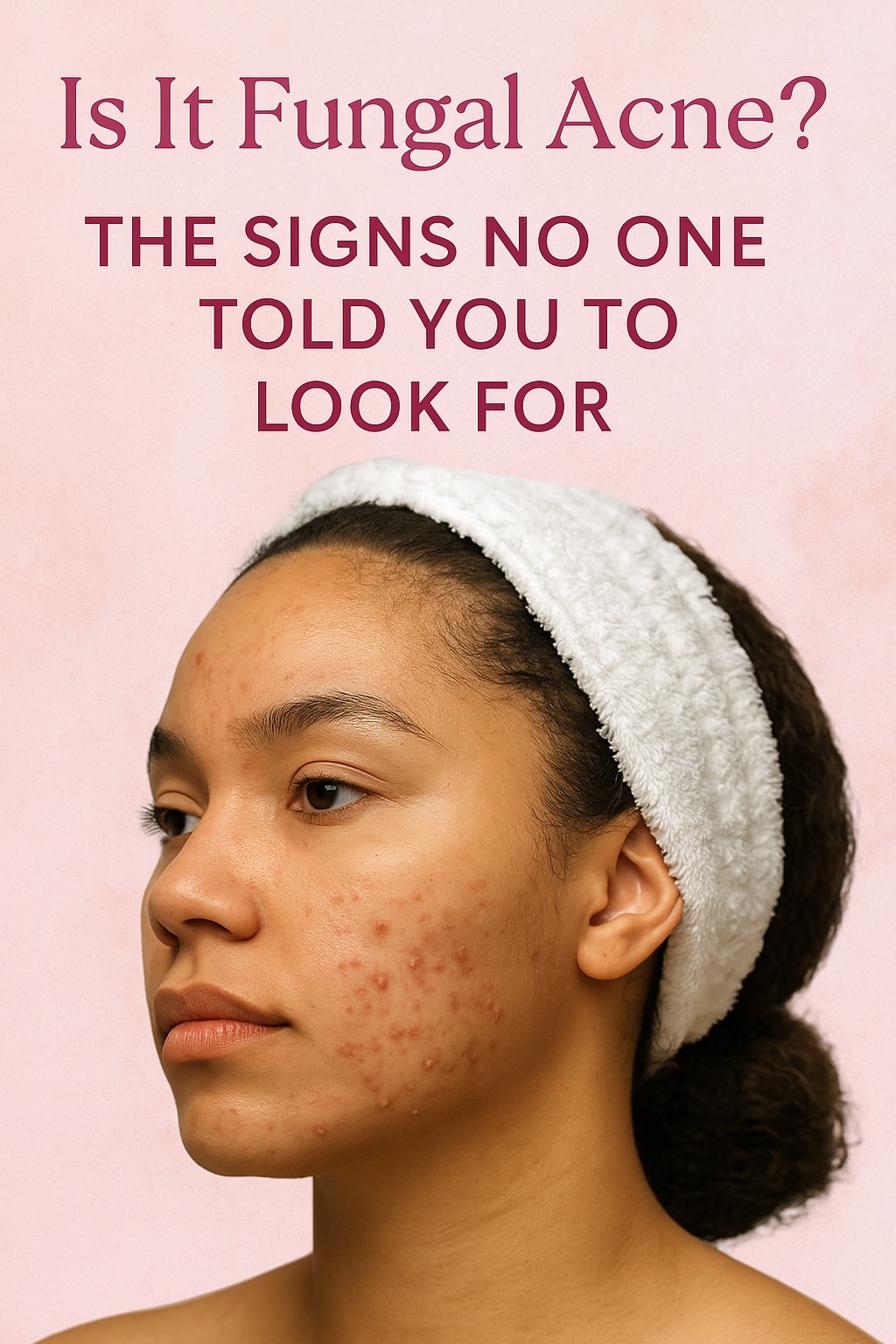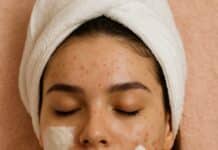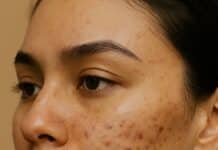Fungal Acne vs Bacterial Acne: How to Tell the Difference and Avoid Wasting Money on the Wrong Products

If you have been trying to clear your skin for months and nothing seems to work, there is a high chance you are treating the wrong type of acne. Most people lump every breakout into one category and assume it is all the same, but there is a big difference between fungal acne and bacterial acne. The problem is that they can look similar on the surface, which leads to a lot of confusion and a lot of wasted money on products that do not match the real issue.
As an esthetician who works with acne clients both virtually and in person at Lulu Beauty Spa in Chicago, I see this exact problem every week. Someone comes in frustrated because they have tried every serum, every trending product and every hack on social media without a single improvement. The moment we break down what they actually have and build the right routine for their specific acne type, their skin finally starts to heal.
If you are trying to figure out exactly what is happening with your skin right now, this guide is going to help you understand the difference clearly. By the end, you should be able to get a good sense of which one you may be dealing with, what to avoid and what steps to take next. And if you still feel unsure, you can always call or text 773 870 2816 with questions or book a virtual or in person facial so we can look at your skin together and give you a personalized plan.
Let’s start with the basics.
What Is Fungal Acne
Fungal acne is not really acne at all. The correct name is Malassezia folliculitis and it is caused by an overgrowth of yeast on the skin. This yeast is naturally present on everyone but when the environment is right it can multiply too quickly and cause small clogged bumps.
Fungal acne usually appears as clusters of tiny bumps that all look the same. Most people describe it as sandpaper texture. These bumps tend to be itchy or uncomfortable which is an important clue. Fungal acne usually pops up on the forehead, temples, jawline, chest or upper back. It thrives in warm humid environments and it loves sweat. If you work out regularly, wear tight clothing or have naturally oilier skin, you are more prone to it.
The biggest giveaway is that fungal acne does not respond to traditional acne products. It often gets worse when you use benzoyl peroxide, salicylic acid or heavy moisturizers because these products can feed the yeast and make the bumps spread.
What Is Bacterial Acne
Bacterial acne happens when pores get clogged with oil, dead skin and bacteria. It can show up as whiteheads, blackheads, inflamed pimples or cysts. Bacterial acne can appear anywhere on the face and body. These breakouts can hurt, feel tender or appear red and swollen. Unlike fungal acne, the bumps are usually not all identical.
Bacterial acne responds more predictably to acne products and treatments. Things like salicylic acid, benzoyl peroxide, topical retinoids and regular facials will usually help. When someone has bacterial acne, the goal is to reduce inflammation, unclog the pores and support the skin barrier.
How To Tell The Difference
Here are the most honest and clear ways to figure out which one you might be dealing with.
1. Look at the shape and size
If all the bumps look exactly the same and appear in clusters, there is a strong chance it is fungal.
If the bumps vary in size and some look like regular pimples, it is more likely bacterial.
2. Pay attention to itchiness
Fungal acne is often itchy or uncomfortable.
Bacterial acne does not usually itch unless it is extremely inflamed.
3. Notice where the breakouts are
Fungal acne loves the forehead, temples, jawline, chest and back.
Bacterial acne can show up anywhere, especially cheeks and jawline.
4. Observe how your skin reacts to products
If your breakouts get worse with oils, moisturizers or acne treatments, it may be fungal.
If your breakouts improve with salicylic acid or benzoyl peroxide, it is likely bacterial.
5. Look at your lifestyle
If you sweat often, do not shower right after workouts, wear tight clothing or live in a humid environment, fungal acne becomes more likely.
If you are still unsure which one you have, do not stress. Most people cannot fully tell on their own. This is exactly why virtual skin analysis exists. You can book a virtual acne consultation and I will look at your skin in real time on FaceTime and tell you exactly what is going on.
You can call or text 773 870 2816 with any questions as well.
What Makes Fungal Acne Worse
If you think you might have fungal acne, avoid these triggers because they feed the yeast.
• Heavy moisturizers and creams
• Coconut oil, shea butter and other rich oils
• Sweat sitting on the skin too long
• Unwashed workout clothing
• Hair products that touch your forehead
• Occlusive ingredients like petrolatum or certain lipids
• Antibiotics on the skin or taken orally
• Over exfoliating
• Using too many active products at once
Many people accidentally make their fungal acne worse by trying to treat it like regular acne. They scrub harder, add more actives or layer multiple products. This feeds the problem instead of fixing it.
What Makes Bacterial Acne Worse
Bacterial acne has different triggers.
• Skipping sunscreen
• Not washing makeup brushes
• Sleeping in makeup
• Using products that clog pores
• Not exfoliating enough
• Hormonal changes
• Stress
• Picking at acne
• Using too many harsh products that damage the skin barrier
A big mistake people make is over exfoliating or stripping their skin. When your barrier is damaged, your skin produces more oil to protect itself which leads to more breakouts.
Treatments For Fungal Acne
Here are the treatments that actually help.
• Antifungal products
• Washes with zinc pyrithione
• Keeping the skin dry and clean after sweating
• Avoiding heavy oils
• Using lightweight gel based moisturizers
• Targeted antifungal prescriptions when necessary
In a professional setting, certain facials help remove congestion and calm inflammation but the real work is done through the right routine. If you are dealing with fungal acne, a personalized routine is essential because the wrong product can make the bumps spread quickly.
A virtual facial at Lulu Beauty Spa is perfect for fungal acne. I will go step by step through your current routine, identify everything feeding the yeast and rebuild a routine that stops the cycle. You can book online or call or text 773 870 2816.
Treatments For Bacterial Acne
Bacterial acne has more treatment options.
• Salicylic acid to unclog pores
• Benzoyl peroxide to kill bacteria
• Regular extractions
• Enzyme peels
• Chemical peels
• LED blue light
• Targeted retinoids
• Hydrating but non pore clogging products
• Building a strong barrier through the right routine
In the spa, we offer acne clearing facials that deeply clean out congestion and guide your skin back to balance. Many clients combine in person treatments with virtual check ins so I can help adjust their home routine week to week.
What If You Have Both
This is extremely common. Many clients arrive with a mix of fungal acne and bacterial acne which explains why nothing they try ever works. The treatment approach is different and you need a routine that respects both at the same time.
If you feel like your skin has multiple things going on, a personalized consult is the fastest and most effective way to fix it. You can book a virtual or in person facial and we will go through your skin type, lifestyle and current routine in detail.
When To Book A Professional Facial

If any of this feels overwhelming or confusing, that is completely normal. Acne is one of the hardest things to treat on your own because it has so many layers. You do not need to figure it out alone.
Book a facial or virtual consultation with Lulu Beauty Spa if:
• Your acne has not improved after trying multiple products
• You feel like your skin might have fungal acne
• You have dark spots or texture that will not fade
• You are tired of buying products that do nothing
• You want someone to tell you exactly what to use morning and night
• You want clearer skin within a structured plan
You can call or text 773 870 2816 for questions before booking. I encourage every client to ask as many questions as they want because healing your skin should feel clear and guided.
Book Your Acne Consultation
Clear skin starts when you work with someone who understands what is really happening beneath the surface. Whether you are in Chicago or anywhere else, you can book a virtual facial and I will walk you through everything step by step so you know exactly how to care for your skin.
If you prefer an in person acne facial, you can book at Lulu Beauty Spa in Chicago and we will treat your skin with professional grade techniques that accelerate results.
You deserve to stop guessing. You deserve a routine that works. You deserve skin that feels clear, calm and confident.
Book your appointment today or call or text 773 870 2816 and get expert guidance for your skin.


